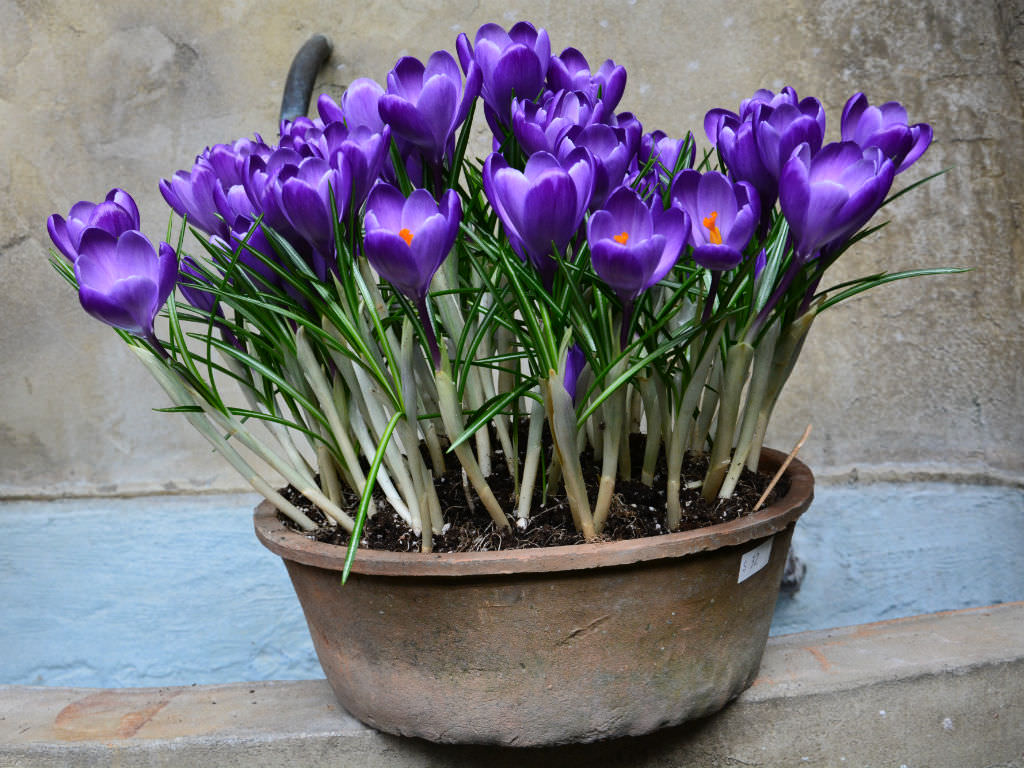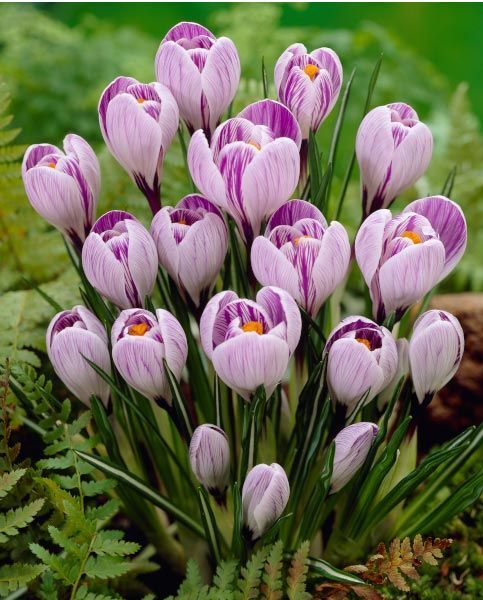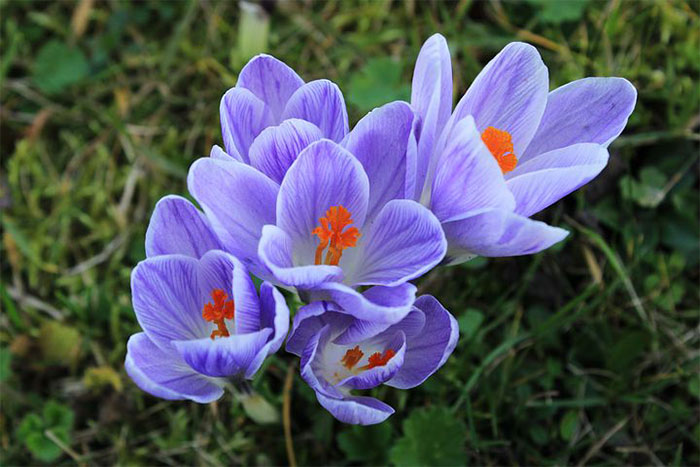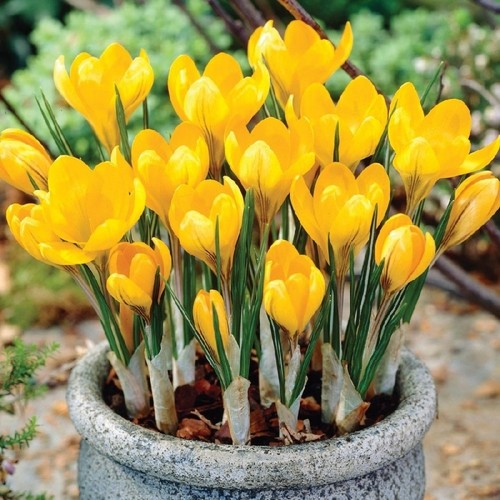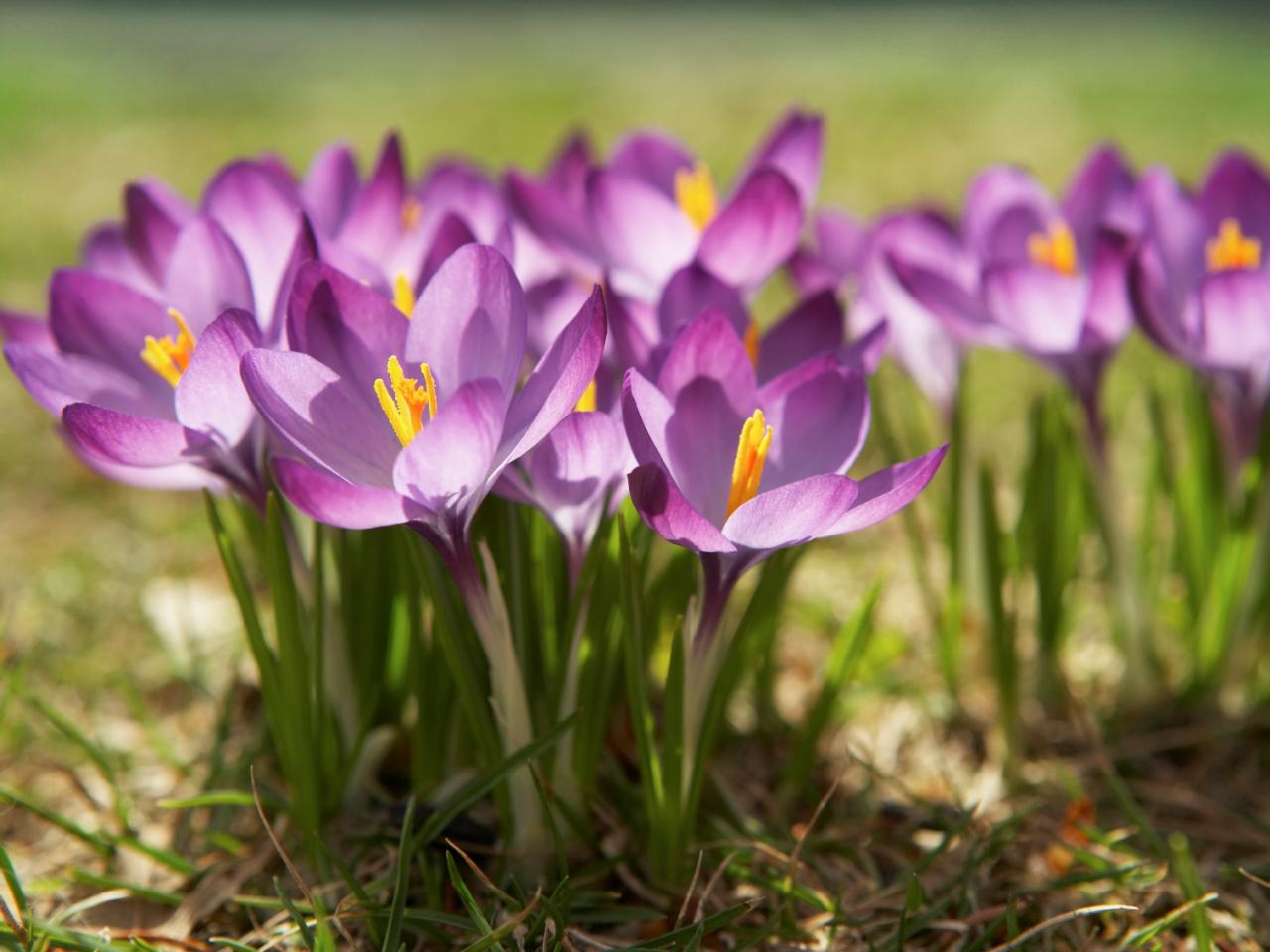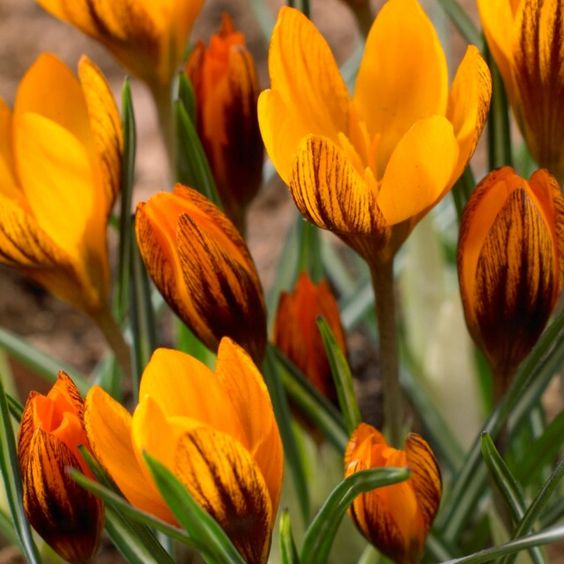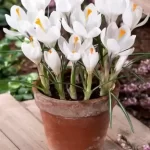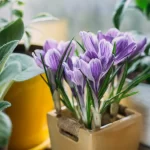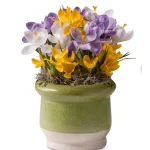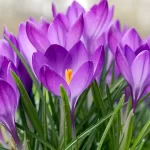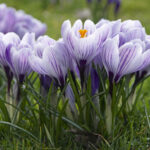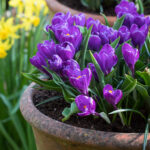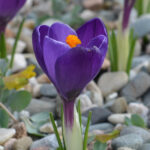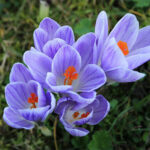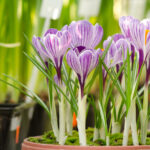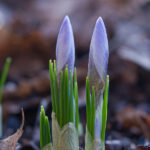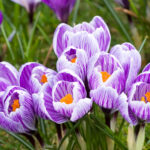Crocuses arise from bulb-like structures called corms and are low-growing, perennial flowering plants in the iris family (Iridaceae) that return year after year for at least five years and grow from a corm. In many regions, crocus flowers (Crocus spp.) mark the arrival of spring. Often you’ll see these early bloomers peeking through the snow long before other flowers appear in your landscape in January, February or March, depending on how severe your winter is.
Crocuses grow in a variety of conditions, including forests, coastal gardens, and suburban lawns. Deer usually pass over them, but rodents like squirrels, chipmunks and mice find crocuses a tasty snack. Flower colors of the cup-shaped flowers include purple, lavender and yellow. There are over 80 species of crocuses, but most commercially available corms are hybrid plants derived from careful crossing of selected species.
While crocuses are often referred to as bulbs, they are technically tubers (like gladioli). The main difference between tubers and bulbs is that tubers are root structures formed from modified stem tissue while bulbs are formed from modified leaf tissue. Once established in an area, crocuses can spread independently by developing tuber offsets.
Crocuses are most often planted for early spring color, although there are also varieties that bloom in late fall and early winter. Spring crocus is not the same as saffron crocus, a fall variety that produces saffron, a common spice and coloring used in cooking. Spring crocuses are particularly early-flowering varieties that should be planted in early fall. The month in which it blooms varies; They usually bloom within two to five weeks after the temperature rises, grow quickly and begin active growth in spring. Spring crocuses are poisonous to pets.
Plant
When to plant?
Crocuses are often among the first to bloom in late winter or spring. They should be planted in early fall. Crocuses typically emerge two to five weeks after the temperature rises in late winter or early spring, depending primarily on the temperature shift.
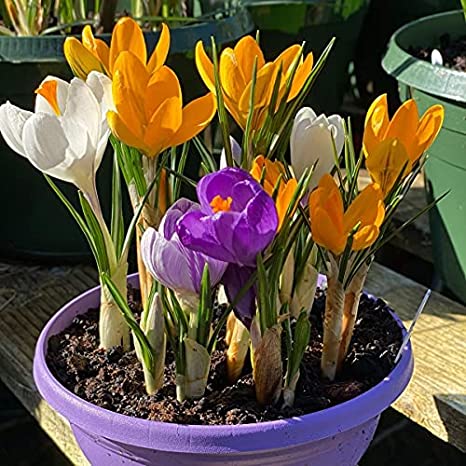
Where to plant
Crocuses prefer full sun locations, but because they bloom before the leaves have finished blooming, they can also be planted under or near deciduous trees. Avoid planting them in heavy shade on the north side of buildings or under bushes, lush evergreen foliage or thickets.
How to plant
Plant crocus tubers about 4 inches deep and 2 to 4 inches apart with the pointed end facing upward. Sometimes it can be difficult to see the pointy end. If you can’t do that, don’t worry too much about it. The plant will grow towards the light. Adding bulbs or bone meal to the soil ensures that the plants receive all the nutrients they need. Also plant them in groups instead of rows or borders. They are small, delicate and less impressive when viewed individually.
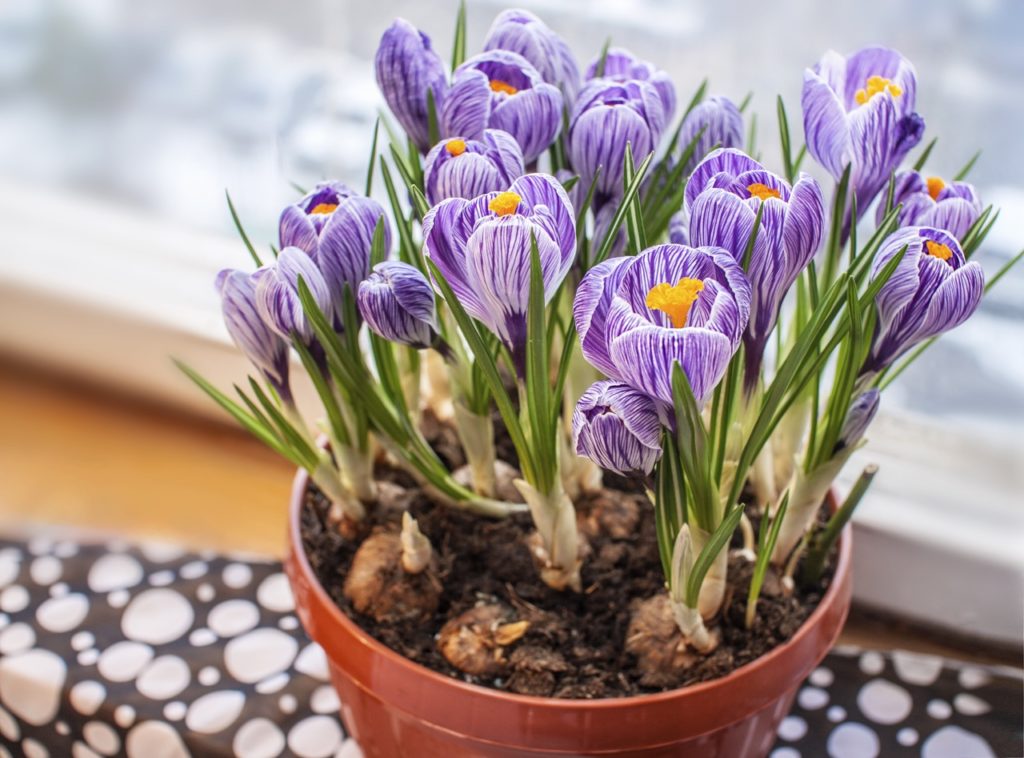
Look
Crocuses belong to the iris family. They all have deep yellow or orange powdery pistils full of pollen that attract bees and other pollinators with their scent. They produce cup-like flowers that close at night.
Snow crocuses are usually the first to bloom and have bicolor petals such as white or cream and purple with bright yellow centers. Dutch crocuses are the giants of the crocus world, even though they are only 2 to 4 inches tall but come in a variety of colors (pink, red, orange, yellow, purple, blue and more). Purpureus grandiflorus crocus is characterized by its deep purple color. Tricolor crocus flowers feature purple, white and yellow bands on their petals.
Crocus care
Crocuses fade quickly when the weather gets hot. Mix different crocuses in your garden to extend the blooming period. Additionally, planting them where other plants fill out and hide their foliage will extend the blooming period and give you the opportunity to store energy for the next season.
Like tulips and other bulbs and corms, spring crocus bulbs feed on the plants’ dying foliage. Therefore, it is important not to cut the leaves until they are completely yellow. This typically occurs within six weeks of flowering. If the crocus is planted in a grassy area, do not mow it until the foliage has faded, as this can deprive your plant of important nutrients.
 TopsDecor.com Home Decor Ideas
TopsDecor.com Home Decor Ideas
